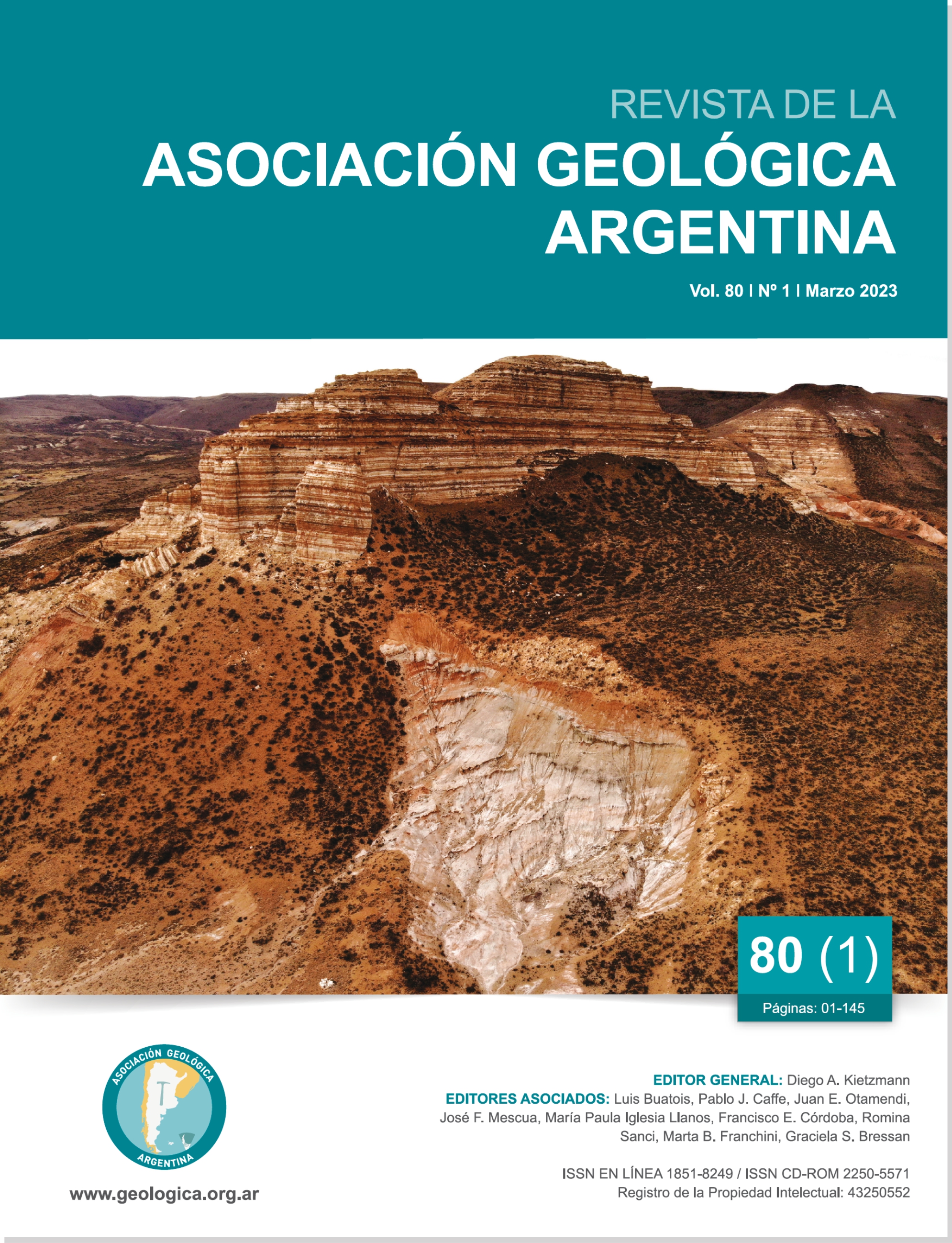Testing the application of the Trishear kinematic model for fault-propagation folding: Results from 2D analogue model
Main Article Content
Abstract
Understanding the mechanics, geometry, and kinematics of fault-propagation folding has become a major research field. Laboratory experiments have provided useful insights because they allow observing in real-time the progressive development of folding. We perform 2D analogue modelling to study the velocity field during fault-propagation folding and compare it with those proposed by the Trishear kinematic model. In this regard, we employ the non-intrusive, particle image velocimetry (PIV) technique to obtain both fault-parallel and fault-perpendicular velocity profiles during different stages of experiment development. Hanging wall vectors reveal a gradual decrease in the parallel component of velocity towards the footwall, while the perpendicular component turns negative, fitting well with the Trishear kinematic model. In addition, we compare the observed fold shape to the fold shapes predicted by the Trishear model for various apical angles and prove that Backlimb Trishear provides a useful approximation of the velocity field of the experiment. Although some researchers have investigated the kinematic field of fault-propagation folds using numerical models, fewer studies have addressed this issue using physical models. The present research explores the application of the Trishear method to fault-propagation folds based on analogue simulations.
Article Details

This work is licensed under a Creative Commons Attribution-NonCommercial 4.0 International License.
Nota de copyright
Los autores conservan los derechos de autor y garantizan a la revista el derecho de ser la primera publicación del trabajo licenciado según una licencia de atribución Creative Commons que permite a otros compartir el trabajo con el reconocimiento de la autoría y de la publicación en la que se publicó por primera vez.
Declaración de privacidad
Los nombres y direcciones de correo electrónico introducidos en esta revista se usarán exclusivamente para los fines declarados por esta revista y no estarán disponibles para ningún otro propósito u otra persona.

